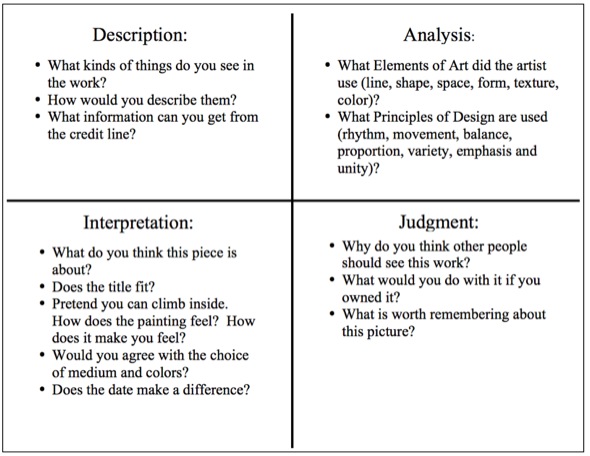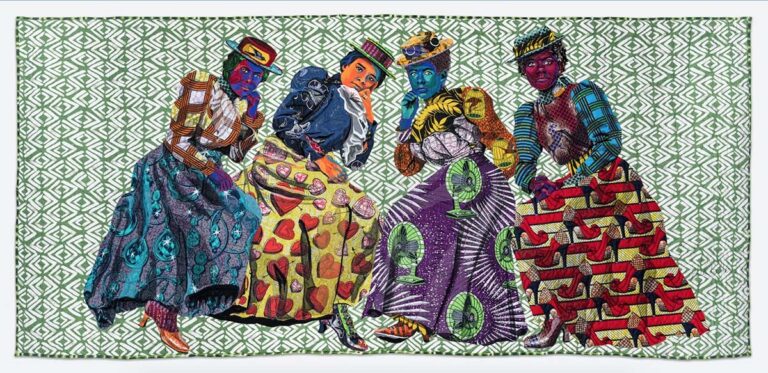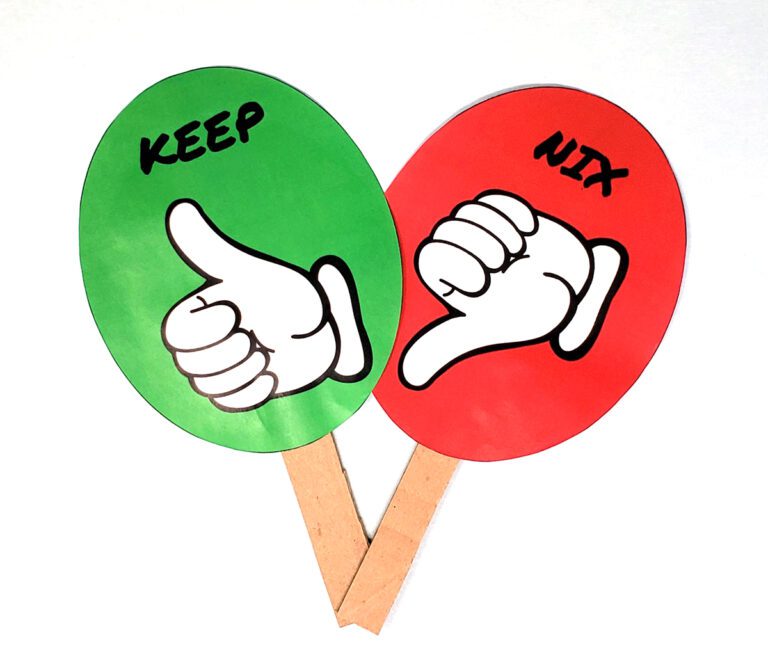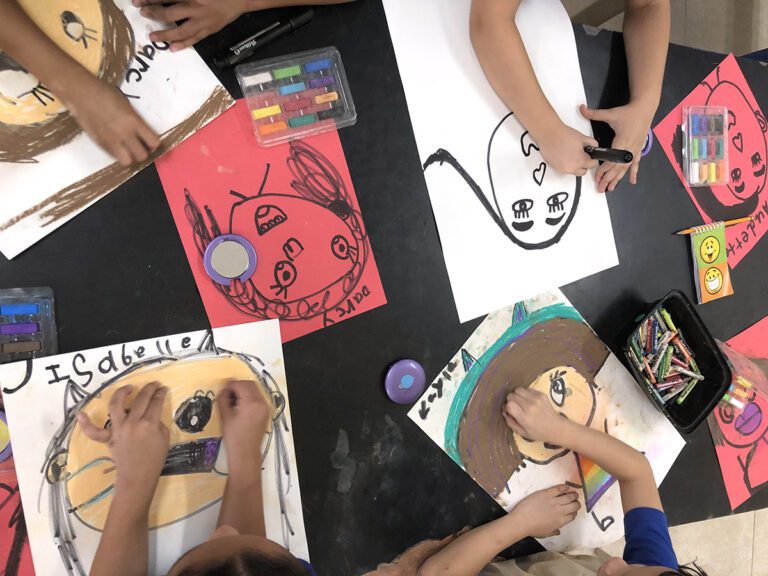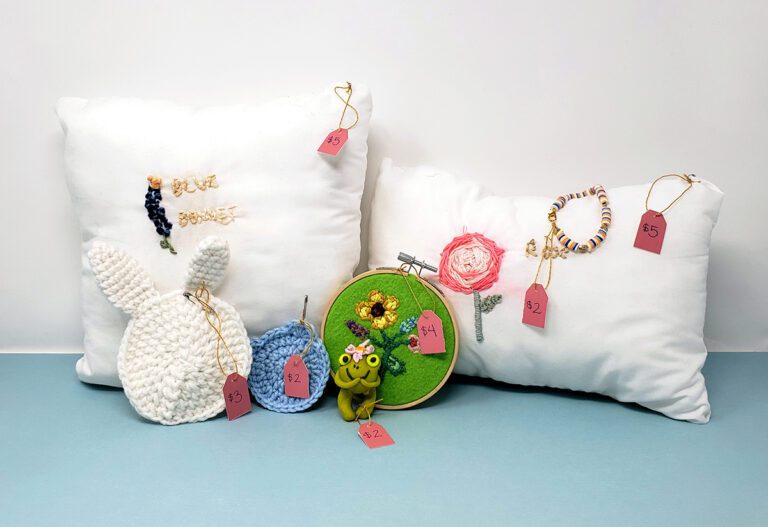We all learned about Bloom’s Taxonomy for Higher Order Thinking Skills as undergrads. It isn’t a new idea; in fact, it has been around since the 1950s.
But how do you actually use and develop these skills in the art room?
One method that I use is a simple technique I call an Interpretation Grid.
It is quick, easy, and applicable to almost any lesson or student critique. All you need is a simple foursquare grid, an image, and a list of questions/prompts that help lead your discussion from Level 1: Knowledge to Level 6: Evaluation.
Here is how it works:
Begin with a 4 square grid. You can draw one on the board or create an electronic document.
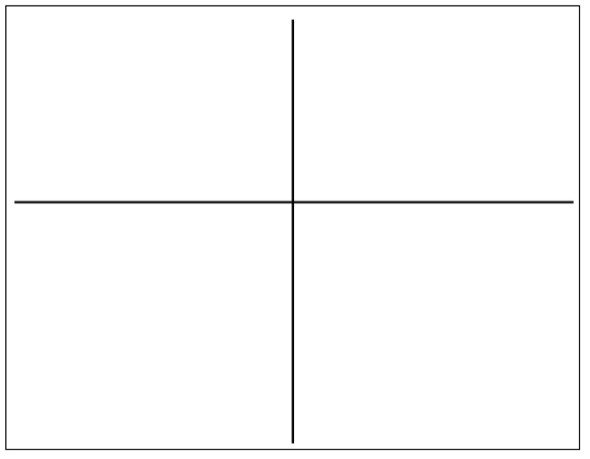
Write one word in each of the 4 quadrants: Description, Analysis, Interpretation and Judgment.
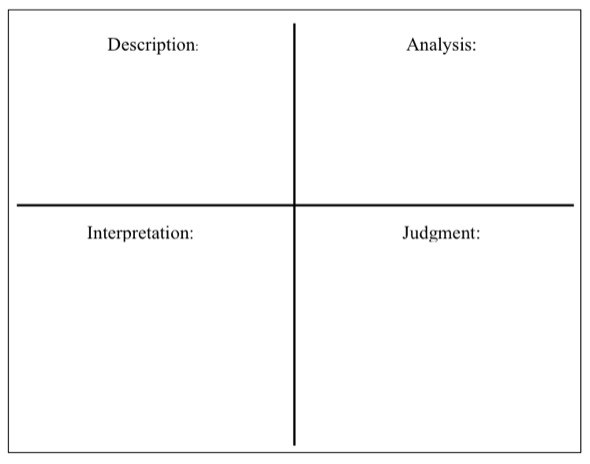
Place an image in the middle and make sure the credit line is included. You could use an artist’s work, like Frida’s Self-portrait with Monkeys in my example, or a student piece for a class critique. Feel free to download the PowerPoint slide I use by clicking on the image below.
Ask students the questions from each quadrant in the order listed above (description, analysis, interpretation, judgment). If you choose to use my PowerPoint slide, you will notice they are color-coded and in rainbow order. The questions for each quadrant are listed below. I print off a copy of the questions for my reference, but I don’t post them for students to read during a whole group discussion.
If you posted the prompts on a bulletin board, it could serve as a self-reflection station as well or you could leave a space for responses and use it as an assessment piece. There are a lot of options. My list of prompts can be downloaded in a handy PDF by clicking on the image below.
You will notice the questions begin with simple, low-risk questions that focus on information students can easily access. As you move through the grid the questions become increasingly open-ended and thought-provoking.
Not all students will have an answer for each of the levels, but participating in the class conversation will encourage students to process their thinking at a higher level. If you use this same technique frequently, you will begin to notice which students are using HOTS and which ones could use a little scaffolding to get there.
I have used this with Kindergarten to adults and I guarantee your students’ thinking will amaze you. So give it a try and get ready to have a thoughtful discussion!
How do you use Higher Order Thinking Skills in the art room?
What are some other question prompts you might add to the list?
Magazine articles and podcasts are opinions of professional education contributors and do not necessarily represent the position of the Art of Education University (AOEU) or its academic offerings. Contributors use terms in the way they are most often talked about in the scope of their educational experiences.

